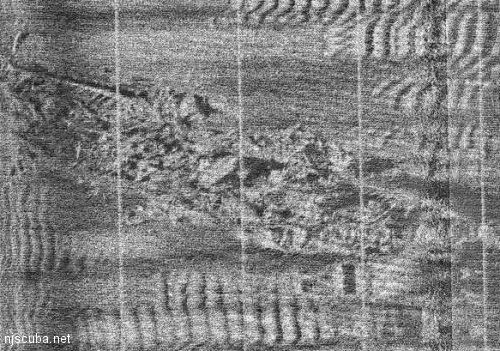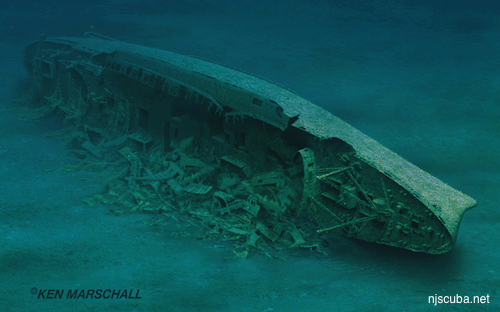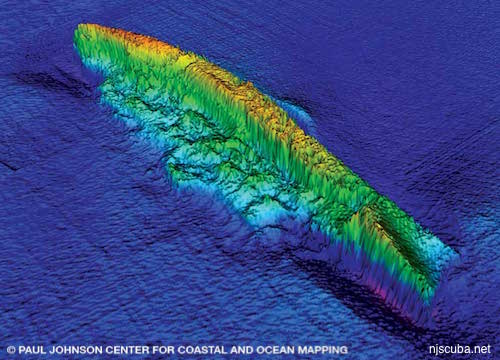Iron & Steel Ship Construction (2/2)
Demise
Iron ships are heavy and tend to settle into the bottom after sinking. The Algol has settled almost 20 ft into the mud since it was put down in 1991. Most iron ships are not left to the mercy of the sea, however. Because of their size, latter-day iron and steel shipwrecks usually pose a great threat to navigation and are therefore blown up or wire dragged by the government. This generally results in a disorganized jumble that resembles a junkyard more than a ship.

The Andrea Doria Goes to Pieces




If you could see the wreck through crystal-clear water, this is what the Andrea Doria might look like over the years. The paintings are slightly inaccurate, as they show the wreck as though it was resting on a hard surface, when in fact it has been slowly sinking into the bottom, as can be seen in the final image.
The deterioration of the wreck is typical for a steel ship. In deep water, the Andrea Doria was not regarded as a hazard to navigation, and never wire-dragged or demolished with explosives. Compare to the Mohawk below, which is an unrecognizable debris field after over 8 tons of dynamite were used to reduce the wreck. This is not actually extraordinary, 25 tons were used on the Fort Victoria, which sank in the shipping lane right outside New York Harbor. Practically nothing is left of her.

The little Pinta broke up in a very similar fashion. I can remember when the wreck was completely intact, like the sketch above. First, the superstructure collapsed. The center of the upper wall of the hull collapsed, and the bow broke off. In fact, the Pinta now looks more like the side-scan of the Doria above than the drawing. Next, the upright wall that was once the ship's bottom will fall over, and the wreck will lose any overall resemblance to a ship.
Knowing how a ship deteriorates after sinking can be a great aid to navigating the wreck. When you realize where you are and how you are oriented, it stops looking like a lot of random junk and starts to make sense. "These are the boilers, and there is the engine, so the bow must be that way!" I seldom use a wreck reel, even on the Mohawk. Of course, when visibility is poor, it is foolish not to use every tool at your disposal.
